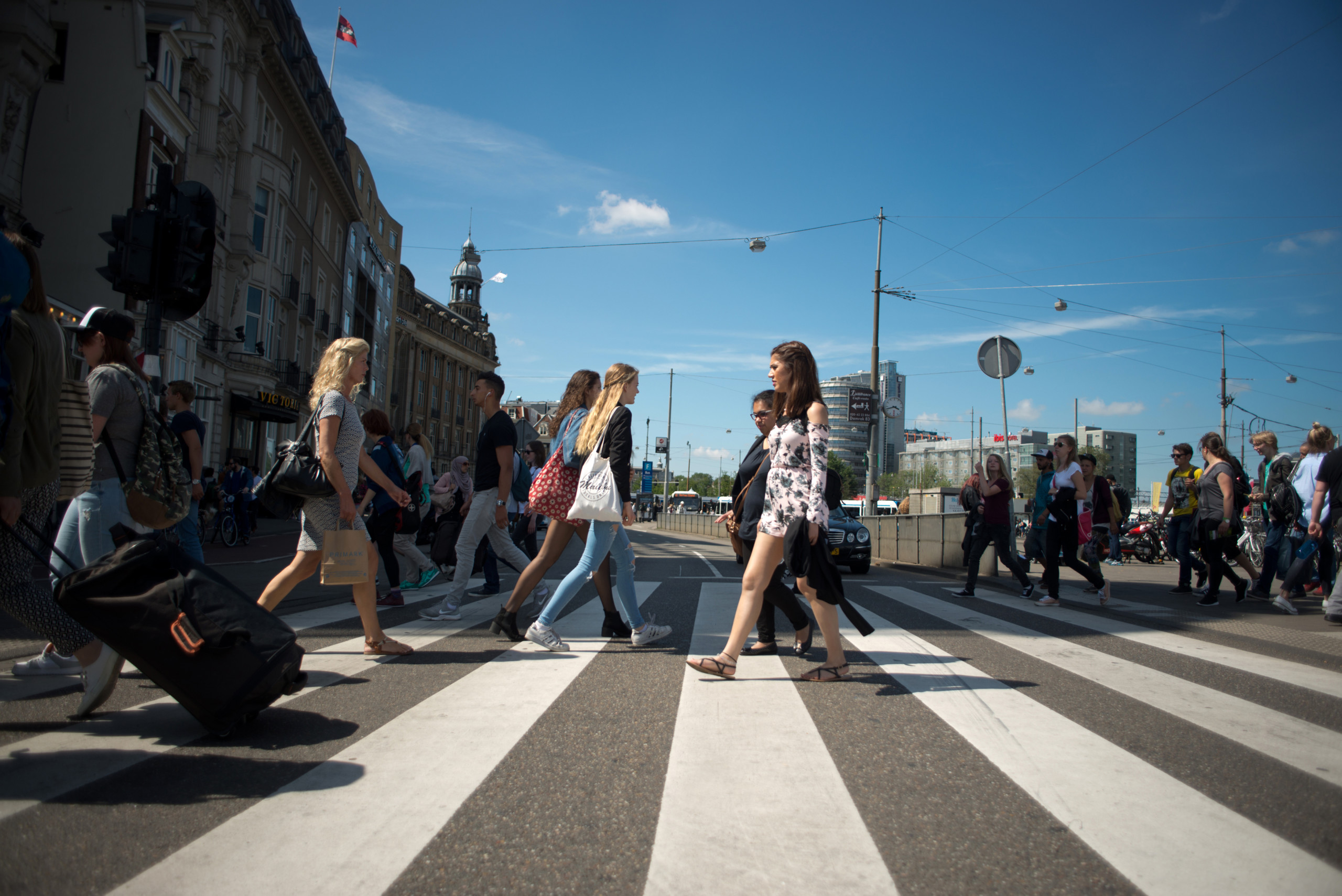Walking
The Economics of Walking
Walking is, in my opinion, one of the most often under-rated form of mobility. A lot of ink is spilled on the topics of driving and cycling, be it innovations, improvements or investments, and I would not argue there isn’t value in those discussions. However, the humble act of using the power of your own two feet–including adapted options for those with personal mobility limitations–holds incredible power in providing completely self-sufficient mobility. Walking also holds myriad economic benefits for communities, and as we look ahead, this simple mode of travel could be the easy solution cities need to maintain and even bolster their economy.

For the better part of a decade, through my work and my writing, I’ve come to be referred to as a cycling advocate. It’s an accidental label I’m happy to wear, but spend an average week with me, and you may find I’m more inclined to walk than cycle. I have always loved walking–I grew up in a one-car household, so walking (or a combination of walking and public transport) was often my default mode. Walking to the store to pick things up for my mom, to friends’ houses, along Queen Street West during my university days in Toronto, Canada, and getting lost with my husband in our neighbourhoods in the many places we’ve lived and visited. To me, traveling on my own two feet is quite frankly one of the easiest and most enjoyable ways to get around.

Walking saves–and generates–money!
And it’s cheap. For most people, walking requires little more than a pair of shoes, and not even a good one. Beyond the personal cost, walking is also inexpensive for municipalities. Consider your neighbourhood street. When it was first constructed, the cost difference between the asphalt on the road and paving for the sidewalk perhaps wasn’t that extreme, but as time passes, that sidewalk lasts exponentially longer. Humans on their own create less wear and tear on infrastructure than when we travel in cars, and that road will need more maintenance more frequently than the sidewalk. So over time, the investment in the space where people walk has greater longevity.
Walking is also incredibly good for your health, which on its own doesn’t have a great economic impact, but throughout our lifetimes equates to significant economic benefits. A study through Melbourne Australia’s Victoria Walks discovered that for every $1 invested in walking, nearly $13 is returned in benefits for decongestion, the environment and, you guessed it, health. People who enjoy regular, daily physical activity reduce their risk of serious disease, their stress levels and simply feel better. This in turn leads to fewer medical visits as well as fewer sick days, ultimately saving the health care system money at the societal level and improving the bottom line for employers.
Walking brings business
I know it’s not as alliterative as the cycling related anecdote but walking truly puts money back into the local economy. For ten years I lived in one of the most walkable neighbourhoods in Vancouver, Canada, and walk I did. Nearly every day I would walk up and down Commercial Drive to do my groceries at the local markets, grab a coffee from my favourite café, pick up a snack for my kids from the old Italian bakery, and make numerous other stops along the way. At a rough estimate, my family was spending an average of $600 per month at local establishments, or 3/4 of our monthly food budget. That may not seem like much on its own, but over the course of the year, our small family of four was investing at least $7,200 back into our community every year, or around 10% of our annual household income.
People arriving to a store on foot may not be spending as much in one purchase, but they’re coming more often, and spending money regularly. Not to mention, they’re not having to budget for parking costs, gasoline and all the other expenses that come from driving to do the weekly shop. Traveling on foot also makes it far more likely that you’ll discover that new local business and stop in to check it out, an impossible task when whizzing by in a car. For local entrepreneurs who rely so heavily on neighbourhood support to grow and thrive, that foot traffic is imperative to success.
Walking improves social mobility
In the 1950’s, as automobility really took hold in the Western world, it was touted as the great tool for prosperity. Seventy years later, it seems the very opposite is true. In the study, “The Socioecological Psychology of Upward Social Mobility,” researchers discovered that the walkability of the community where children grow up has an impact on their ability to move up the economic ladder. Accounting for five key factors–school quality, income inequality, race, social capital, and share of single parent families–they found that when walkability was added as a factor it improved economic mobility by 11%.
This is quite an important discovery because we often view dense, walkable communities in more urban centres as places of lower opportunity. But over time, children of even the lowest socioeconomic bracket were more likely to reach the highest bracket by their 30’s. A number of factors were linked to this mobility, like lack of dependence on a car and its expense and greater access to more plentiful employment opportunities. Very striking was that because walking and physical activity positively impacted their health, they had higher levels of happiness and overall wellbeing, resulting in a greater inclination to be high achievers, ultimately leading to education and, subsequently, employment success.
Walking our way to a bright economic future
Current events have left most cities in a state of economic uncertainty. Small businesses and local entrepreneurs in particular are having to be creative in finding ways to generate income while their customer base is staying home, and most wonder if they’ll weather the storm. At the same time, we are seeing a groundswell of support for local businesses. This, combined with more of us walking in our communities, could prove to be the magic combination of not just helping them entrepreneurs survive, but even thrive in the days and months to come.
What is clear is that with little extra effort, investing and incentivising walking could provide the key to reducing the economic stress as life slowly returns to our city streets. Over time, the return on investment in making walking an accessible option for most people is hard to dispute. It may not be as flashy as the two-, three- and four-wheeled alternatives, but as an activity we can do from our first steps to our last breath, walking provides the mobility option that will have the greatest impact on our economic success for generations to come.

